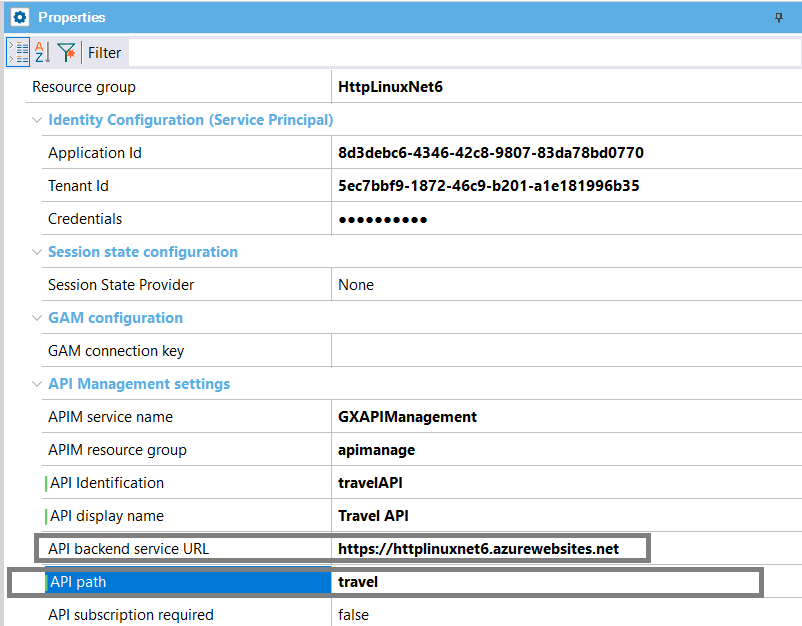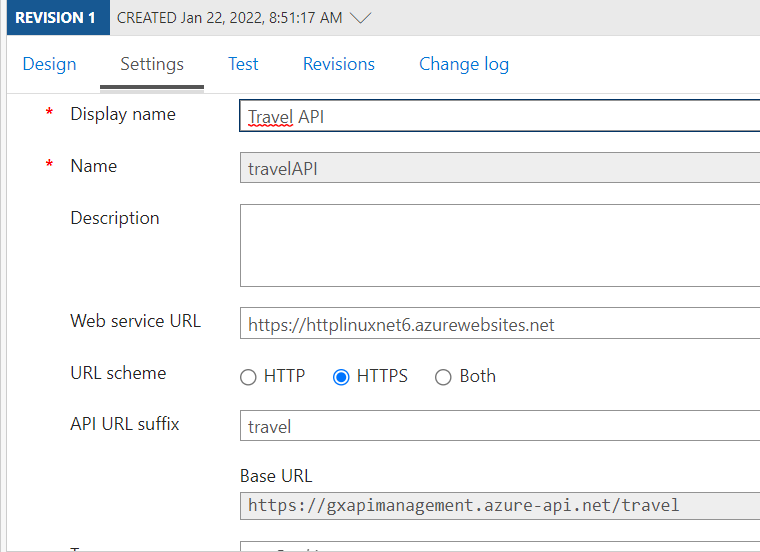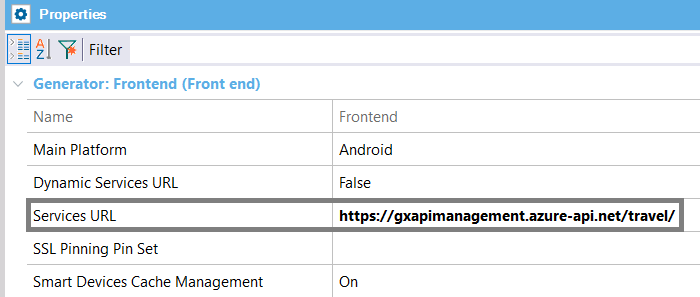This document explains details about the deployment to Azure API Management (APIM).
You can deploy to APIM when deploying Azure Http functions and when deploying mobile (angular) app services. In both cases, deploying to APIM is optional, although it is recommended.
Before going on with this document, read Azure HTTP-triggered functions.
To deploy to APIM, you need to configure the following deployment properties at the API Management Settings of the deploy dialog inside GeneXus:
|
APIM service name
|
Name of the API Management service instance.
|
|
APIM resource group
|
Azure API Management resource group.
|
|
API Identification
|
API revision identifier. It must be unique in the current API Management service instance.
|
|
API display name
|
Display name of this API.
|
|
API backend service URL
|
Absolute URL of the backend service implementing this API.
It corresponds to the URL given for the Azure function app.
E.g: https://MyFunctionApp.azurewebsites.net

|
|
API path
|
Relative URL uniquely identifying this API and all of its resource paths within the API Management service instance.
E.g: travel
|
|
API subscription required
|
If true, the API requires a subscription key on requests. The recommended value for services being called from mobile clients is False.
|
Consider the following deployment configuration:

With the above settings, the API can be seen as follows in the Azure portal (going through the API Management service):

To run the app and use the services just deployed, configure the Services URL property as follows:

Note that the URL is the Gateway URL shown in the Azure portal for the APIM service, followed by the API path you configured on deployment.
Then, at runtime, the /rest suffix in the URL is added automatically by the mobile clients to make the calls, as shown in the figure:


For angular front end applications which use Azure serverless for deploying their backend, see HowTo: Deploy Angular Frontend applications using serverless backend.
How to tackle the cold start problem of Azure Function serverless app.